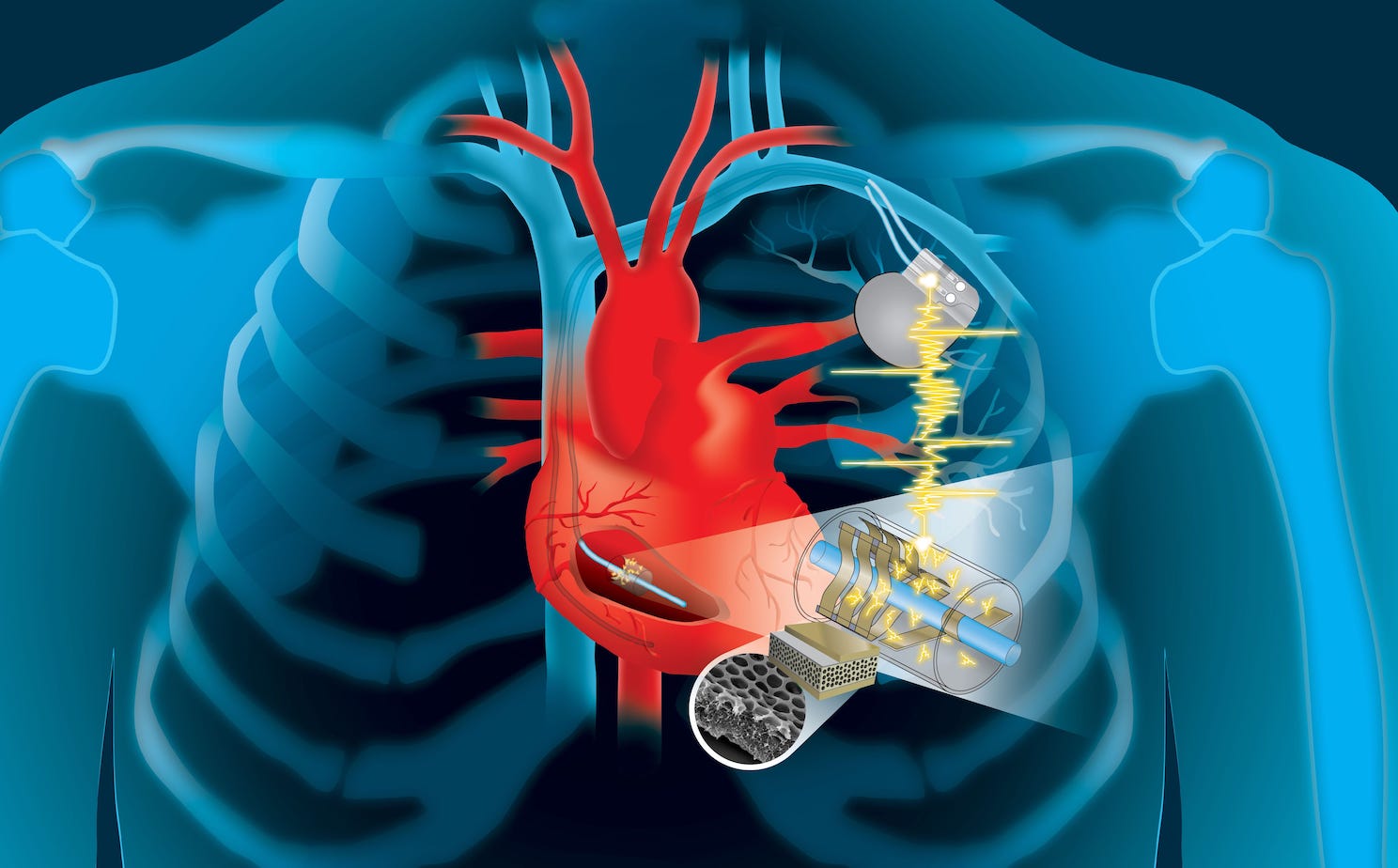The heart's motion is so powerful that it can recharge devices that save our lives, according to new research from Dartmouth College. Using a dime-sized invention developed by engineers at the Thayer School of Engineering at Dartmouth, the kinetic energy of the heart can be converted into electricity to power a wide-range of implantable devices, according to the study funded by the National Institutes of Health.
Millions of people rely on pacemakers, defibrillators and other live-saving implantable devices powered by batteries that need to be replaced every five to 10 years. Those replacements require surgery which can be costly and create the possibility of complications and infections.
The team's work proposes modifying pacemakers to harness the kinetic energy of the lead wire that's attached to the heart, converting it into electricity to continually charge the batteries. The added material is a type of thin polymer piezoelectric film called "PVDF" and, when designed with porous structures either an array of small buckle beams or a flexible cantilever it can convert even small mechanical motion to electricity. An added benefit: the same modules could potentially be used as sensors to enable data collection for real-time monitoring of patients.
The results of the three-year study, completed by Dartmouth's engineering researchers along with clinicians at UT Health San Antonio, were just published in the cover story for Advanced Materials Technologies.
